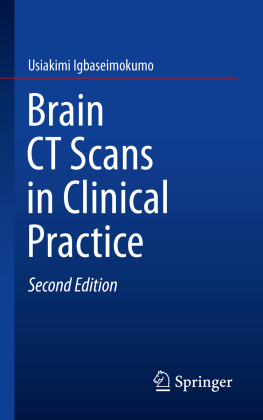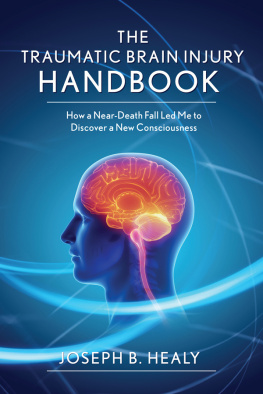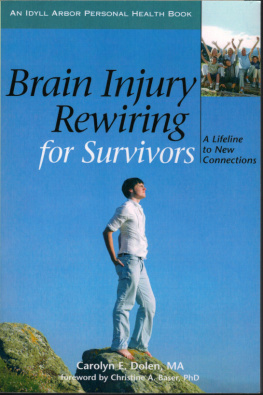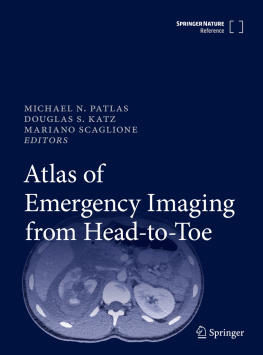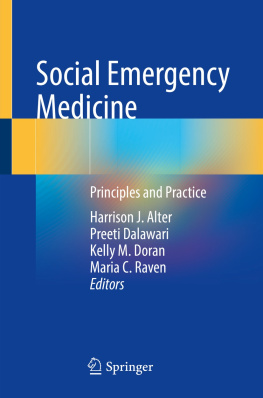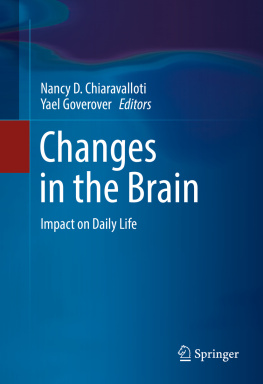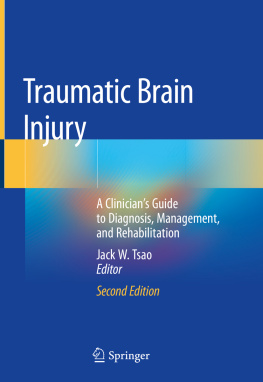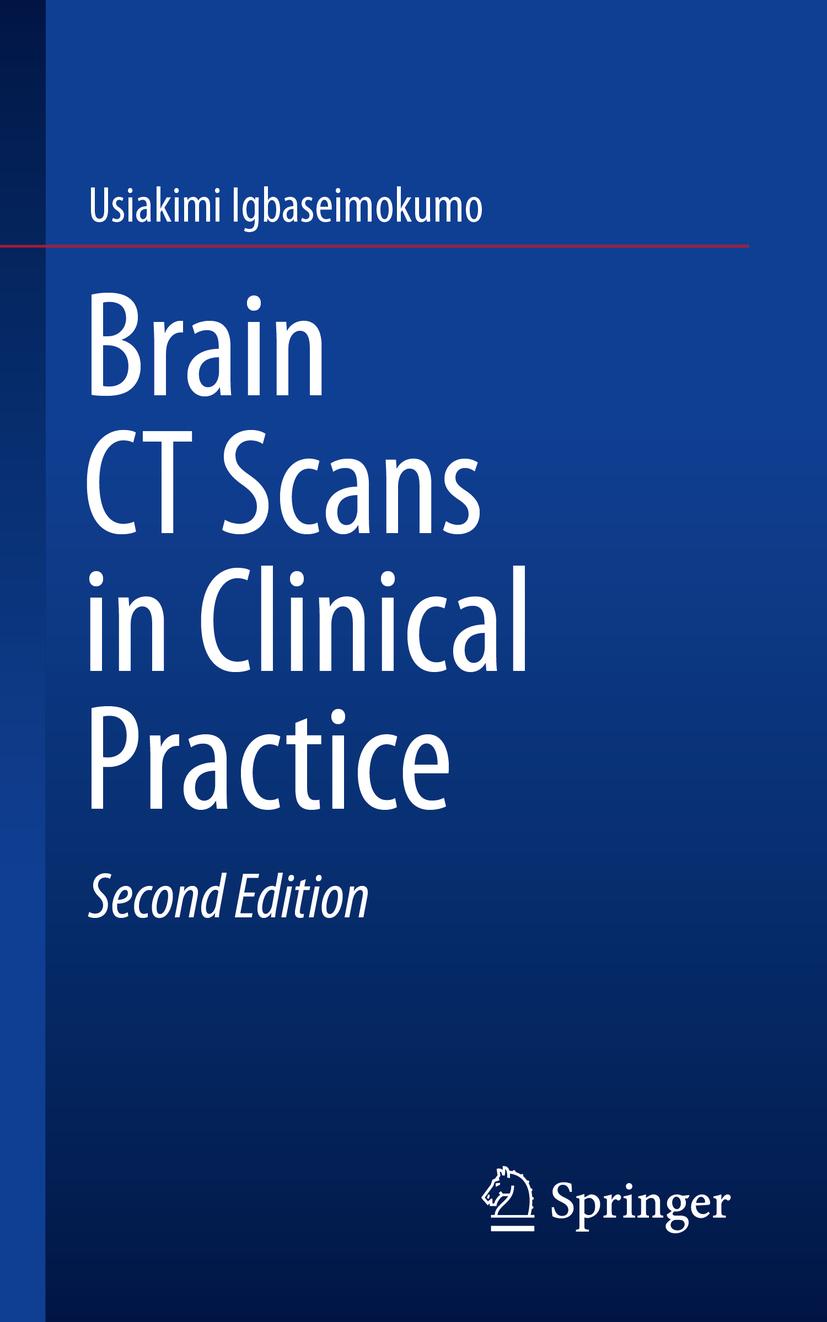In Clinical Practice
Taking a practical approach to clinical medicine, this series of smaller reference books is designed for the trainee physician, primary care physician, nurse practitioner and other general medical professionals to understand each topic covered. The coverage is comprehensive but concise and is designed to act as a primary reference tool for subjects across the field of medicine.
More information about this series at http://www.springer.com/series/13483
Usiakimi Igbaseimokumo
Pediatric Neurosurgery, Texas Tech University Health Sciences, Center School of Medicine, Lubbock, TX, USA
ISSN 2199-6652 e-ISSN 2199-6660
In Clinical Practice
ISBN 978-3-030-14827-0 e-ISBN 978-3-030-14828-7
https://doi.org/10.1007/978-3-030-14828-7
Library of Congress Control Number: 2019936180
Original edition: Igbaseimokumo, U: Brain CT Scans in Clinical Practice, Springer-Verlag London, English, 2009
Springer Nature Switzerland AG 2019
This work is subject to copyright. All rights are reserved by the Publisher, whether the whole or part of the material is concerned, specifically the rights of translation, reprinting, reuse of illustrations, recitation, broadcasting, reproduction on microfilms or in any other physical way, and transmission or information storage and retrieval, electronic adaptation, computer software, or by similar or dissimilar methodology now known or hereafter developed.
The use of general descriptive names, registered names, trademarks, service marks, etc. in this publication does not imply, even in the absence of a specific statement, that such names are exempt from the relevant protective laws and regulations and therefore free for general use.
The publisher, the authors, and the editors are safe to assume that the advice and information in this book are believed to be true and accurate at the date of publication. Neither the publisher nor the authors or the editors give a warranty, express or implied, with respect to the material contained herein or for any errors or omissions that may have been made. The publisher remains neutral with regard to jurisdictional claims in published maps and institutional affiliations.
This Springer imprint is published by the registered company Springer Nature Switzerland AG.
The registered company address is: Gewerbestrasse 11, 6330 Cham, Switzerland
Foreword
Interpretation of the emergency CT brain scan is a visual art. Comparison is made between the image in front of you and a reference image. For the experienced person this reference image is imprinted in the mind; therefore comparison is quick. For the beginner you can either carry several examples of every possible appearance of normal and abnormal scans to compare with or read this book! This book contains a few proven ways of quickly learning to interpret a brain CT scan, irrespective of your previous experience.
The radiologists experience is related to the number of hours he or she has spent looking at CT scans. The radiologist conveys his evaluation of the CT scan in words that often come in a particular sequence and combination. This book is about helping you to rapidly understand and confidently use the same language used by the radiologist.
The difference is that whereas the radiologist aims for perfection, you aim for functionality. For instance, it will be acceptable and clinically safe if an intern physician looks at the brain CT scan in Fig. and can make a judgement of the urgent action required like ABCs ( A irway, B reathing and C irculation with c- s pine) and call a neurosurgeonimmediately. This is lifesaving and efficient without the need for a long list of differential diagnoses before deciding on this action. Since the first edition, image presentation and storage has moved from films to digital format. The author has seamlessly introduced this new platform in explaining the concepts of interpreting the emergency brain CT scan. Therefore, the skill to act decisively about the CT scan in front of you can be acquired in a very short time. And the author has reduced that time to a few hours using this book!
Figure 1.
Epidural hematoma! Emergency action required! ABCs and call neurosurgeon!
Roy Jacob
Lubbock, TX, USA
Preface
An illustrated guide for ER physicians, trauma surgeons, primary care physicians, residents, medical students, nurses and other care givers
Across emergency rooms all over the world, thousands of patients are referred for brain CT scans daily. A radiologist often has to interpret the scan or a consultation has to be made to a neurosurgeon to review the scan. Most of this happens late at night and is a significant source of discontent. Thus, having frontline physicians to be proficient in interpreting the emergency brain CT scan improves the efficiency of the whole pathway of care and is potentially lifesaving as time is of the essence for many patients with severe brain injury or stroke.
Underlying all of the above and the primary reason for writing this book is that the skill required to determine an immediate life-threatening abnormality in a brain CT scan is so basic and can be learned in a short time by people of various backgrounds and certainly by all physicians. Indeed, the emergency head CT scan is comparable to an electrocardiogram in usefulness and most definitely as easy to learn. This book is therefore written for caregivers the world over to demystify the emergency CT brain scan and to empower them to serve their patients better. It is obvious to me from the responses from people I have had opportunity to teach this subject that not only is there a desire to learn this basic skill but also people learn it quickly and wonder why it has not been presented so simply before.
It is to fulfil this need and to reach a wider number that I have put together these basic, proven steps in the interpretation of emergency brain CT scan for ER physicians, trauma surgeons, primary care physicians, nurses, medical students and other primary caregivers.
Since the first edition, the transition from X-ray film-based delivery of images to electronic delivery (e.g. PACS) has become more widespread. However, the examination of individual slices to reconstruct a three-dimensional image remains the cornerstone of CT imaging; hence this volume has retained the present format while recognizing the ability of the non-radiologist provider to manipulate individual images including enlarging and changing the window level. This technology is by no means universal and therefore not assumed in the description of images in this text.
Usiakimi Igbaseimokumo
Lubbock, TX, USA
Acknowledgements
My heartiest gratitude goes to my wife Ebitimi and my kids Gesiye, Ilayefa and Binaere who volunteered the real cost in time to prepare this book. My eternal gratitude to the IsounsTurner and Miriamfor spiritual, financial and intellectual support on this and every other project I ever embarked upon, thank you.

